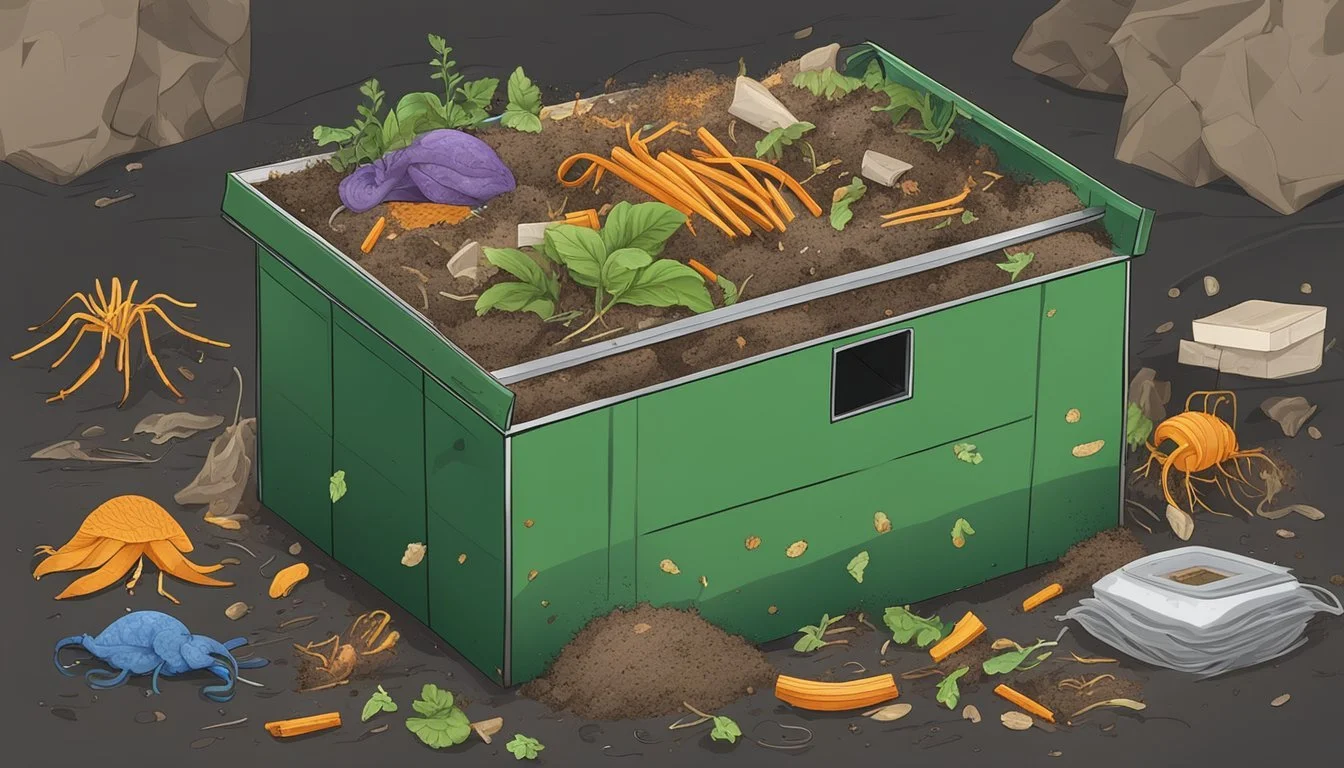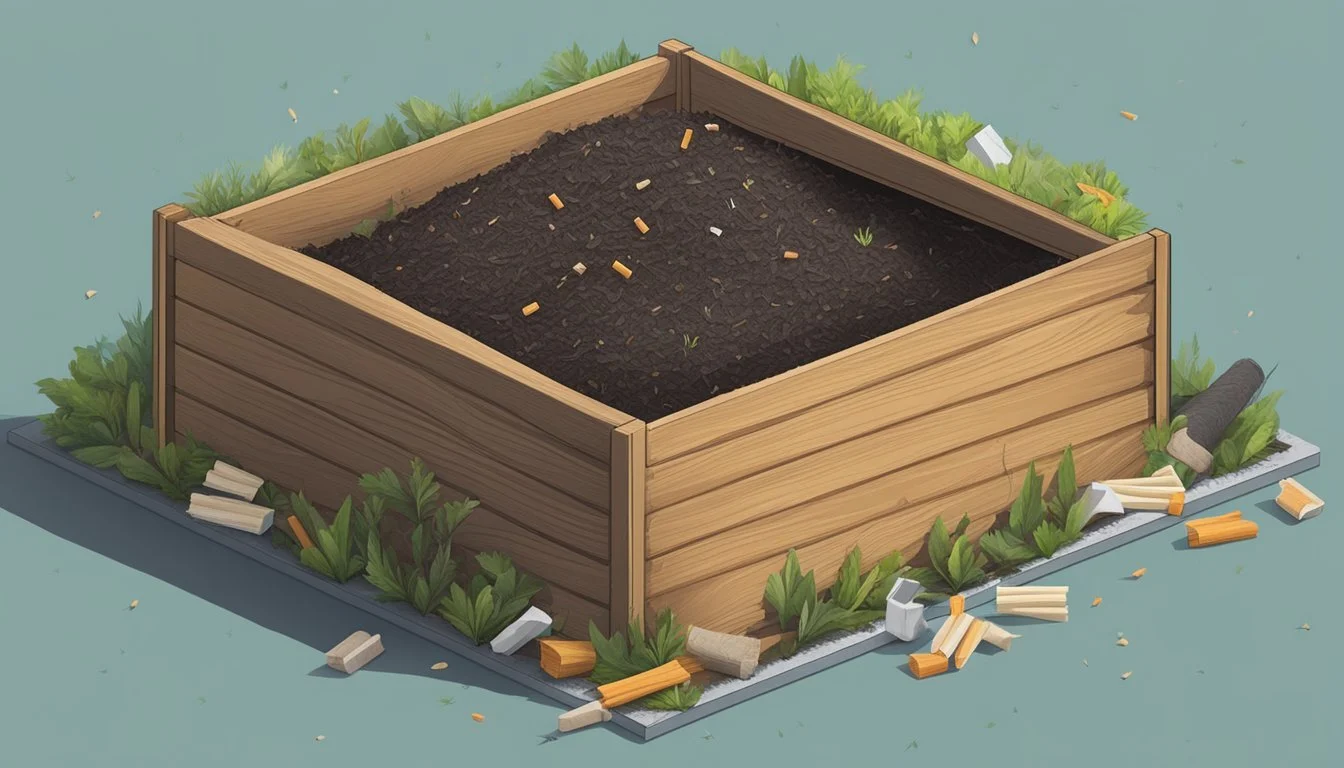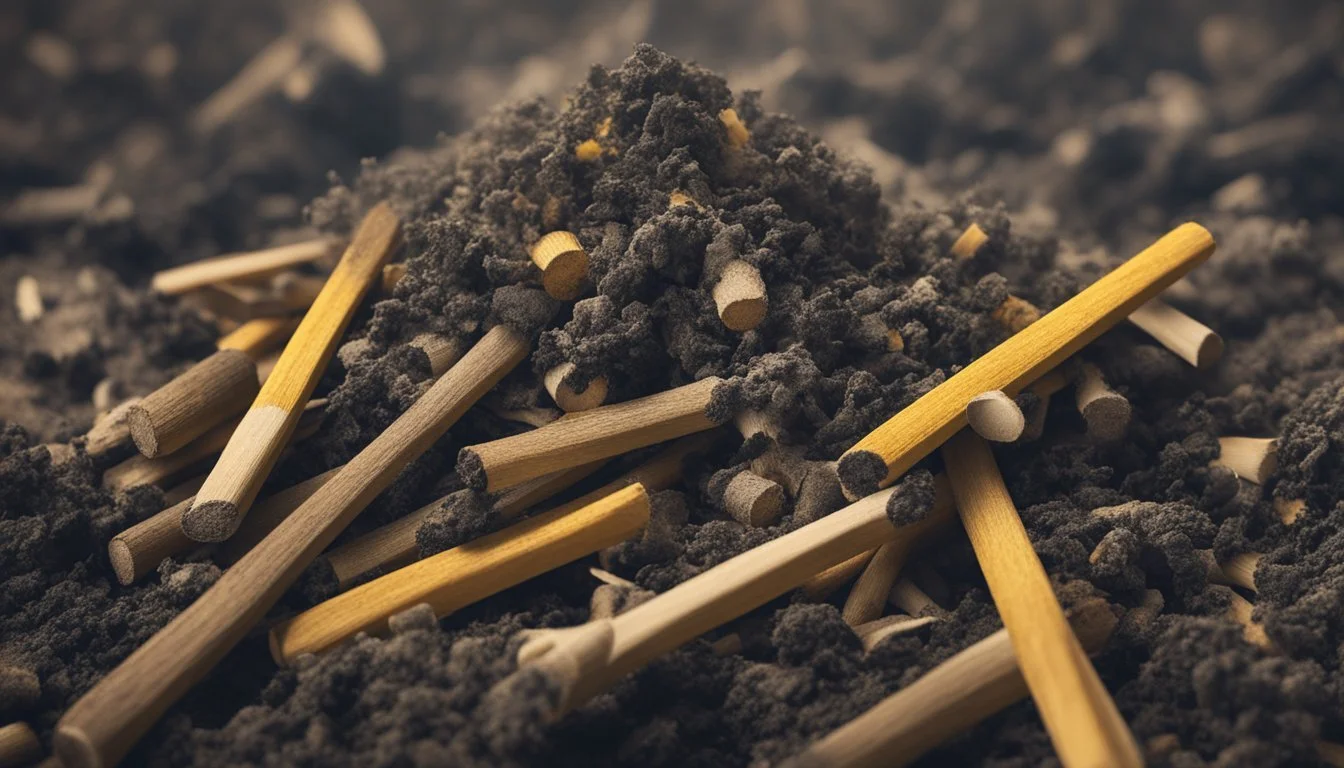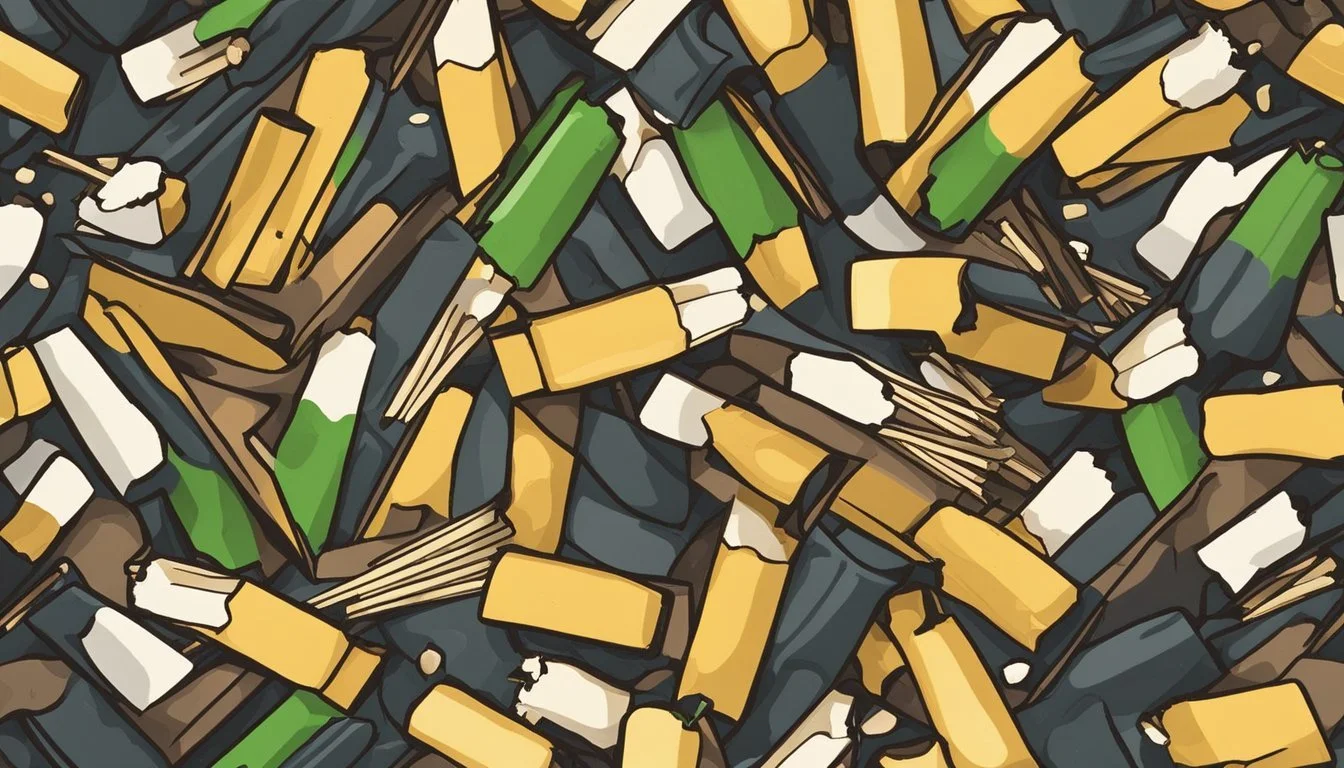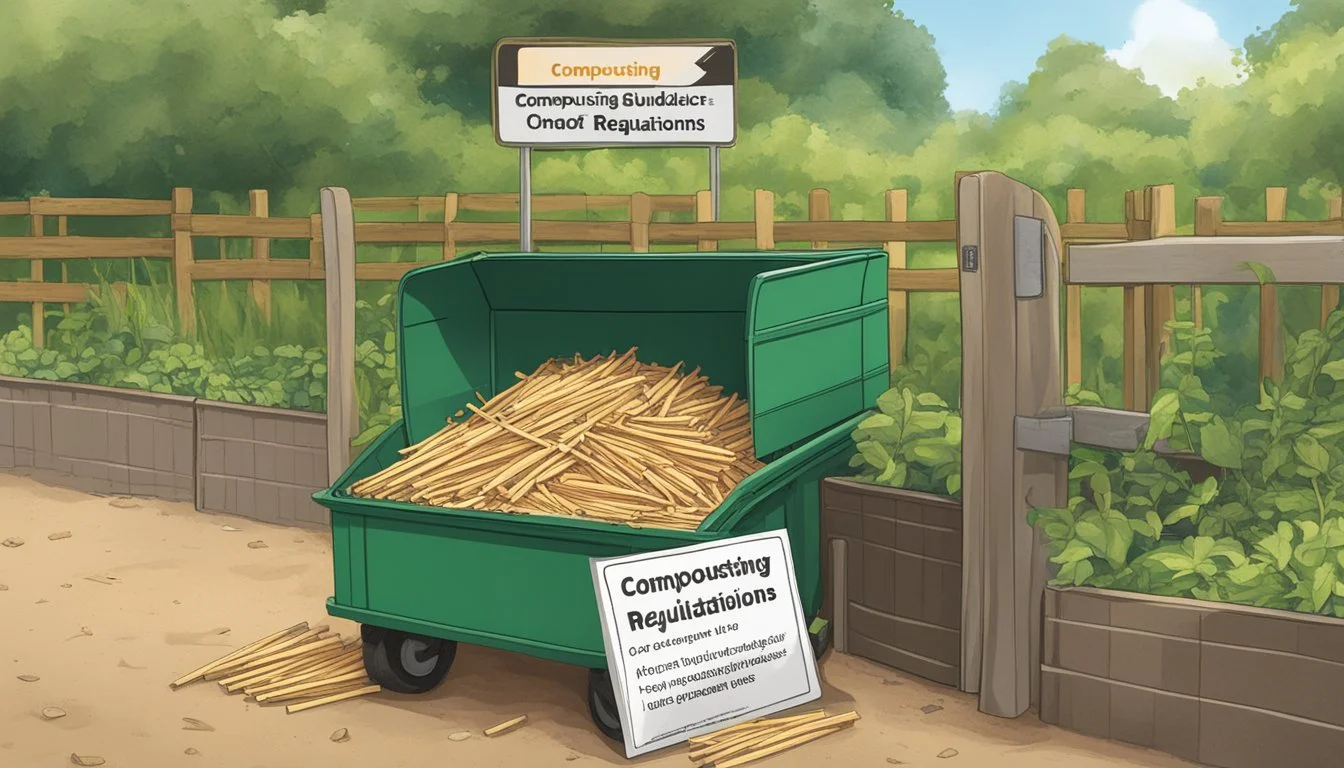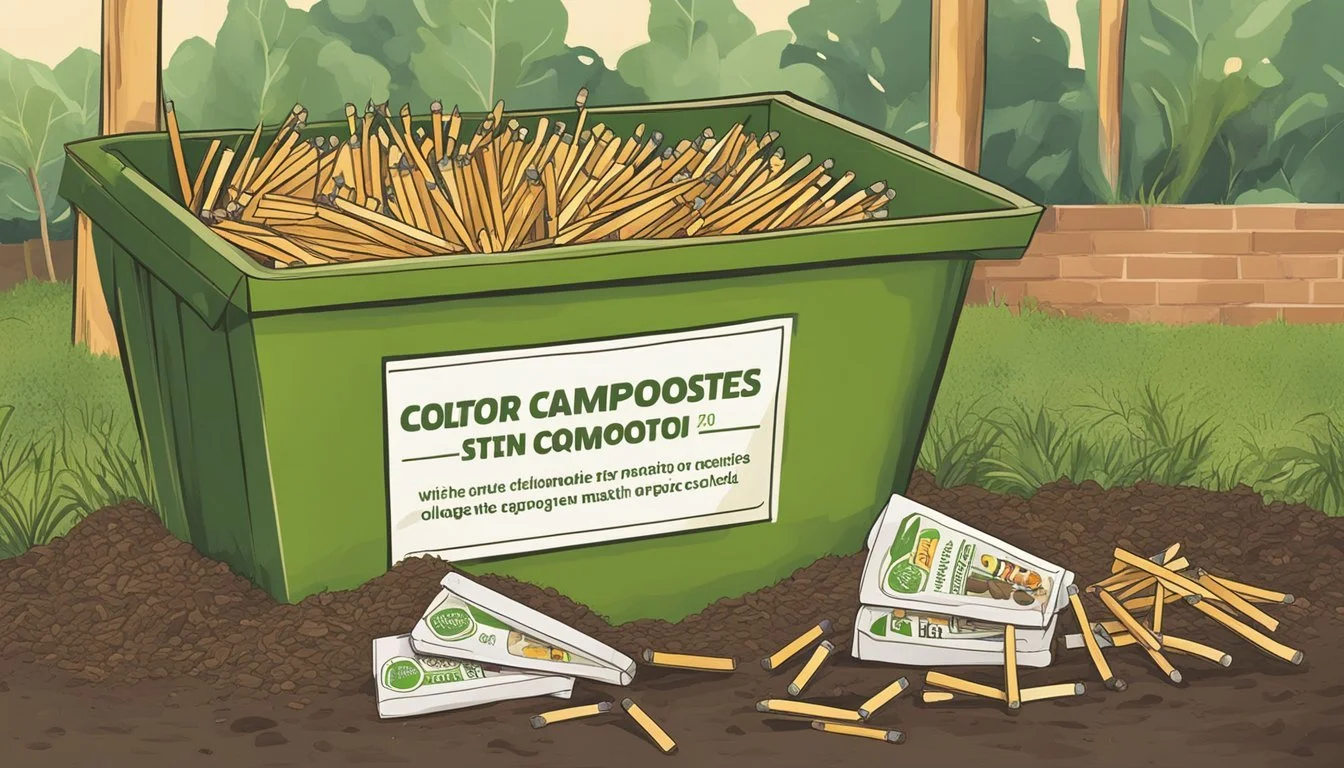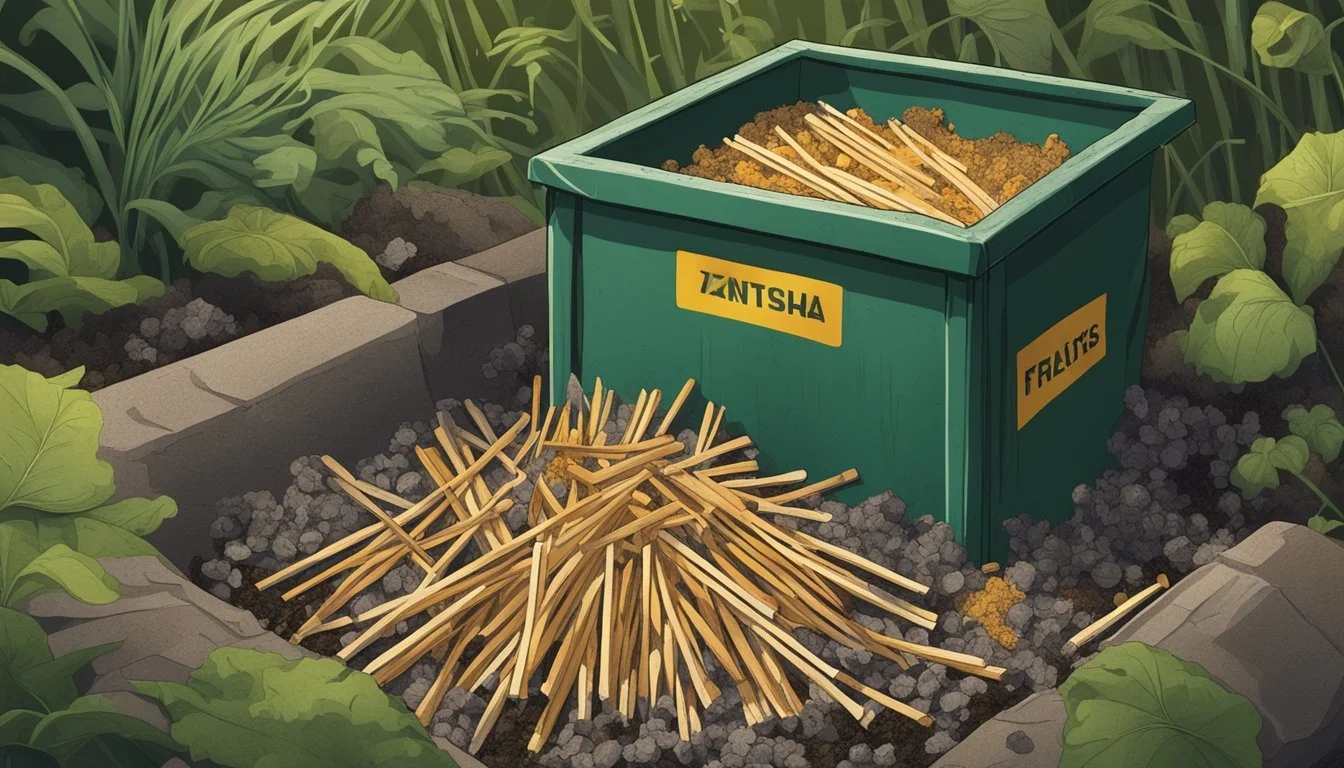Can You Compost Used Matches?
Understanding Safe Disposal Methods
Composting remains an integral practice for many gardeners and eco-conscious individuals aiming to reduce waste and enrich soil health naturally. It involves the process of recycling organic material such as food scraps, leaves, and paper, turning this material into nutrient-rich humus which acts as a natural fertilizer for soil. With a growing interest in sustainable living, inquiries about what materials can be composted are common.
Used matches come up as a frequent point of discussion in the realm of composting, particularly since they are an everyday item for those who use matches for lighting candles, stoves, or fires. They're typically made of small pieces of wood or cardboard, materials that are inherently biodegradable. Once a match has been used, it leaves behind a carbonized stick and a small amount of ash—components that fit within the brown matter category of composting materials, which also includes leaves, twigs, and paper.
The composting of used matches is straightforward when done correctly. By adding spent matches to a compost heap, individuals contribute additional carbon to their compost mix, which balances the nitrogen-rich green materials like food scraps and lawn clippings. These carbon elements are essential in creating a balanced compost pile, which in turn facilitates the decomposition process to produce fruitful compost, thus completing the natural cycle of organic matter.
Understanding Compost
Composting is a biological process in which microorganisms, including bacteria and fungi, break down organic matter into simpler substances. This process results in the production of compost, which is a rich, nutrient-filled soil amendment beneficial for gardening and agriculture.
Essential components for successful composting include:
Greens: These are nitrogen-rich materials such as fruit and vegetable scraps, coffee grounds, and grass clippings.
Browns: Carbon-rich substances including leaves, straw, wood chips, and paper.
Air: Oxygen is required for microorganisms to efficiently decompose organic material.
Moisture: Adequate water content is critical, as too little will slow down the process, while too much can create anaerobic conditions.
The balance between these components is vital for maintaining healthy compost. For instance, a ratio of 1 part green to about 30 parts brown by volume is often recommended. Microorganisms work best within this balance, ensuring a faster and odor-free composting process.
The temperature of a compost pile is a direct indicator of microbial activity. As microorganisms digest the material, they generate heat. Ideally, compost piles should remain between 135°F and 160°F to effectively kill pathogens and weed seeds.
Finally, the process can take anywhere from a couple of months to over a year, depending on factors like the size of the organic matter pieces, the aforementioned balance of materials, and environmental conditions.
Composting Basics
Composting is the natural process of recycling organic matter, such as leaves and food scraps, into a valuable fertilizer that can enrich soil and plants. At its core, composting requires three primary components:
Browns: This includes materials such as dead leaves, branches, and twigs. They add carbon to the compost.
Greens: This category encompasses items like grass clippings, vegetable waste, fruit scraps, and coffee grounds, providing nitrogen.
Water: The compost pile needs moisture to aid the breakdown of materials.
The right balance between these components is crucial for the composting process to work effectively. The ideal ratio is 3:1, where three parts brown materials provide carbon, while one part green materials supply nitrogen. Water is then added to the pile to moisten the mixture without saturating it.
When setting up a composting system, it's essential to mix the materials periodically to introduce oxygen, which is vital for composting. One should also ensure the compost pile is in a suitable location where it can maintain the necessary temperature for microbial activity.
In terms of what can be composted, most organic materials are suitable, including:
Fruit and vegetable peels
Eggshells
Grass and plant clippings
Paper and cardboard
Used matches (ensuring they are completely extinguished)
It is recommended to avoid composting meat, dairy, diseased plants, and any inorganic or toxic substances. Proper composting does not only result in nutrient-rich soil but also reduces waste and the carbon footprint associated with traditional disposal methods.
The Compost Process
Composting is the biological decomposition of organic waste by microorganisms, such as bacteria and fungi, under controlled conditions. A typical compost pile combines organic matter such as food scraps, leaves, and in this case, used matches, which decompose over time to form a nutrient-rich soil amendment known as compost.
The key to successful composting is the balance between carbon and nitrogen. Carbon-rich materials, often brown and dry, provide energy for the microorganisms. In contrast, nitrogen-rich materials, usually green or wet, supply the proteins necessary for microorganism growth. For a healthy compost process, the recommended carbon to nitrogen ratio is roughly 30:1.
Carbon sources: sawdust, dry leaves, cardboard
Nitrogen sources: food scraps, grass clippings, coffee grounds
When composting matches, it's important to note that they're considered a carbon source. The wood from a used match will decompose and contribute to the pile's carbon content, while any remaining substances, such as phosphorus sulfide from the match heads, are minimal and break down safely.
Moisture and aeration are also vital to the compost process. The pile should be kept damp, but not waterlogged, and regular turning or mixing introduces oxygen necessary for decomposition.
Lastly, the compatibility of items added to a compost bin is crucial. While used matches can be composted, they should be completely extinguished to avoid igniting the pile. Over time, the matches become part of the transforming organic material that eventually matures into compost, ready to enhance soil fertility.
Items Suitable for Composting
When composing a compost pile, it's critical to balance 'green' nitrogen-rich materials with 'brown' carbon-rich materials. Here's a list of items that can be incorporated into compost:
Greens:
Fruit scraps: Banana peels, apple cores, and other fruit remnants.
Vegetable scraps: Carrot tops, potato peels, and other vegetable waste.
Coffee grounds: Used coffee grounds add nitrogen.
Tea leaves: Loose or in compostable bags.
Grass clippings: Fresh clippings are rich in nitrogen.
Plants: Spent flowers and houseplants.
Hair: Human or pet hair in small amounts.
Herbs and spices: Expired or leftover seasonings.
Browns:
Wood: Small twigs or chips, including used matches.
Cardboard: Shredded cardboard sans any glossy coatings.
Paper napkins: Unbleached and not contaminated with oil or chemical substances.
Leaves: Dry leaves provide bulk and aeration.
Straw: Straw and hay contribute to the structural support of the pile.
Nut shells: Crushed shells from nuts, though these take longer to break down.
Other compostable items:
Cereal, crackers, pasta, rice, bread: Grains should be free of oils and dairy.
Paper plates: As long as they're not coated with plastic.
Wine corks: Natural cork decomposes over time.
Cotton balls: Pure cotton will decompose.
Cotton: Old, non-dyed cotton clothing and rags, torn into smaller pieces.
Avoid composting meats, dairy, fats, and oils, as they can attract pests and cause odors. Also, it is important to prevent composting plants with diseases or pests—preventing the spread within the compost pile. The composting process turns these varied waste items into nutrient-rich soil that benefits garden health and reduces landfill waste.
Guidelines for Composting Matches
When considering composting matches, one should recognize the nature of the match composition and safety implications. It's crucial to know how these items break down in a compost environment and the correct methods for adding them to a compost bin.
Safety Considerations
Matches contain substances such as potassium chlorate and sulfur, which are essential for combustion. When composting matches, one must ensure they are completely burned and cold before adding them to the compost to prevent any risk of reignition. Furthermore, composting large quantities of matches at once is not recommended due to the potential concentration of chemicals that might harm the microbial life in the compost.
Match Composition
The typical match is made from wood, which is an organic and compostable material. However, used matches also hold residual chemicals from the igniting head, mainly composed of potassium chlorate and sulfur. While these are often in small amounts that might not significantly hinder the composting process, caution is advised.
Decomposing Matches
In a compost pile, used matches act as a source of carbon, which is a necessary element for composting. Carbon is one of the two major components of compost, with the other being nitrogen, derived from green organic waste. The wood from used matches will gradually decompose, given the right composting conditions of moisture, oxygen, and microbial activity.
Adding Matches to Compost Bin
When incorporating matches into the compost bin, they should be treated as 'brown' materials, similar to dried leaves or cardboard. Here is a brief guide to doing so:
Ensure matches are fully extinguished: Only add matches that are cold and have no smoldering parts.
Break them down: Snapping the matches into smaller pieces can expedite their decomposition.
Mix with other browns: Combine matches with other carbon-rich materials to maintain a balanced compost.
Monitor the pile: Keep an eye on the compost's temperature and humidity to ensure the matchsticks break down properly.
Balancing Your Compost
Effective composting requires a careful balance of carbon-rich 'browns' and nitrogen-rich 'greens' to facilitate the appropriate breakdown of organic materials into nutritious soil.
The Role of 'Browns' and 'Greens'
'Browns' are carbon-rich compost materials, such as dried leaves, cardboard, and used matches. They provide the compost with structure and create air pockets essential for aeration. On the other hand, 'greens' supply the necessary nitrogen content. These are typically kitchen scraps like fruit and vegetable peelings, coffee grounds, and grass clippings. A compost pile needs both 'browns' and 'greens' to support the growth of microorganisms that break down the waste.
Ideal Compost Ratios
The ideal ratio of browns to greens in a compost bin is roughly 3:1 by volume:
Browns (Carbon-rich materials): Add three parts.
Examples: Leaves, twigs, used matches (which are considered compostable), shredded paper.
Greens (Nitrogen-rich materials): Add one part.
Examples: Vegetable scraps, coffee grounds, grass clippings.
This ratio ensures that the compost remains aerated without becoming overly moist, which could lead to odors and a slower decomposition process. It's important to maintain this balance to produce high-quality compost suitable for enriching garden soils.
Environmental Impact of Composting
Composting used matches holds potential benefits for the environment, notably in terms of reducing landfill waste and mitigating greenhouse gas emissions. By integrating matches into compost, they are repurposed as organic fertilizer, which supports a sustainable and eco-friendly waste management system.
Reduction of Landfill Waste
Sustainable Waste Management: Composting organic materials like used matches decreases the volume of waste sent to landfills. It diverts items that are otherwise considered non-recyclable and extends the life of landfills.
Eco-Friendly Practices: By transforming used matches into organic fertilizer, composting reduces the need for inorganic fertilizers, favoring a more natural, eco-friendly approach to soil management.
Greenhouse Gas Mitigation
Reducing Emissions: The process of composting organic waste such as food and used matches plays a role in lowering methane emissions from landfills. Methane is a potent greenhouse gas, and its reduction is a significant measure in the fight against climate change.
Organic Fertilizer Benefits: Utilizing compost as an organic fertilizer not only enhances soil health but also helps in locking in carbon, which otherwise might be released into the atmosphere, contributing to the greenhouse effect.
Challenges in Composting
Composting is a beneficial process, yet practitioners may encounter various issues that can affect the efficiency and safety of their compost piles. From unanticipated problems that impede decomposition, to managing pests and odors, maintaining a healthy compost bin requires vigilance and informed practices.
Common Composting Problems
Composting entails a balance of organic materials that decompose to produce rich soil amendment. However, imbalances in the compost pile, such as too much or too little moisture, inappropriate temperature, and an uneven mix of green and brown materials, can slow down the decomposition process or halt it entirely. Users must monitor their compost piles and adjust them as needed to ensure proper break down of materials.
Excess moisture can lead to anaerobic conditions, creating a slimy, compacted mass that is not conducive for proper composting.
Insufficient moisture makes it difficult for microorganisms to survive and do their job effectively.
Poor aeration can suffocate the pile, prompting a shift from aerobic to anaerobic decomposition, which is slower and more malodorous.
Pest and Odor Management
A compost bin can attract pests such as rodents or insects if food scraps are not properly covered or if meat and dairy products are mistakenly added. Managing pests involves strategies like:
Maintaining a proper balance of green (nitrogen-rich) and brown (carbon-rich) materials can deter pests who are attracted to the readily available nutrients in the green waste.
Turning the pile regularly to bury food waste and disrupt potential nesting sites for pests.
A well-maintained compost pile typically has an earthy smell. However, odors can occur and become a challenge when:
The compost pile is too wet, causing anaerobic conditions and producing a foul stench.
It lacks aeration, resulting in a build-up of odors due to poor oxygen circulation.
Incorrect materials are added, such as oils, fats, and pet wastes, which can create unpleasant smells and attract pests.
To manage these odors, ensuring the compost pile is properly aerated and maintaining the correct balance of compost materials is crucial. Regularly turning the pile can help to minimize odor issues and accelerate the composting process.
Advanced Composting Techniques
When incorporating used matches into a compost pile, one must apply advanced composting techniques to optimize the decomposition process. Here, precision fosters an environment conducive for microorganisms to thrive and ensures proper composting of varied materials.
Layering: Ensure that used matches are interspersed within the compost pile in thin layers. These layers should be alternated with green and brown materials to maintain a balance of nitrogen and carbon.
Green materials: vegetable scraps, grass clippings
Brown materials: leaves, sawdust, cardboard
Moisture Monitoring: Control the moisture level, aiming for a consistency resembling a wrung-out sponge. If a compost pile is too wet, it can hinder aeration, while too dry an environment slows the decomposition process.
Aeration: Regularly turn the compost pile to introduce oxygen, which is crucial for microorganisms to effectively break down materials. Precise aeration can prevent the production of unwanted odors and accelerate decomposition.
Temperature Tracking: Use a compost thermometer to monitor the pile’s core temperature, which should ideally be between 135°F and 160°F (57°C and 71°C). This indicates a healthy microbial activity level.
Placement of Matches: Used matches should be placed nearer the center of the compost pile, where temperatures are higher, facilitating a quicker breakdown and diminishing potential toxins.
Size Reduction: Break or cut larger materials, including used matchsticks, into smaller pieces to increase surface area, encouraging quicker microbial action.
By adhering to these advanced composting practices, one ensures that matches not only decompose properly but also contribute to a nutrient-rich compost beneficial for soil enrichment.
Composting Regulations and Guidance
When it comes to composting used matches, individuals must consider both local laws and federal guidelines. It's crucial to stay informed about specific legal requirements and EPA recommendations to ensure compliance and environmental safety.
Local Composting Laws
Composting regulations can vary significantly from one locality to another. Municipalities may have distinct ordinances in place:
Permit Requirements: Some regions require permits for composting operations, especially large-scale or commercial activities.
Permitted Materials: Local laws list which items can be composted, often including yard trimmings and food scraps, and detail handling of materials like used matches.
Zoning Laws: Composting activities may be subject to zoning laws that dictate where composting bins or facilities can be located.
To avoid legal issues, it's imperative to check with the local environmental or waste management department for current composting laws.
EPA Guidelines
The U.S. Environmental Protection Agency (EPA) offers guidance to enhance the composting process, emphasizing environmental protection:
Carbon-to-Nitrogen Ratio: EPA recommends maintaining the right balance between carbon-rich materials and nitrogen-rich materials to support microorganism activity.
Oxygen and Moisture: Proper levels of oxygen and moisture are essential for effective composting, as outlined by the EPA.
Safe Composting Practices: The guidelines highlight practices for safe and efficient composting, such as turning materials regularly and monitoring temperature.
Compliers should consult the EPA's resources on composting to ensure they are creating beneficial compost while protecting the ecosystem.
Alternatives to Composting
When considering the disposal of used matches, it is important to examine environmentally friendly alternatives to composting. These include recycling, where feasible, and upcycling, which enables creative reuse.
Recycling Matches
Most recycling programs do not accept used matches because they have been burned and are too small to process. However, unused matches may be recyclable via specific wood recycling channels, as long as they have not been treated with chemicals. It's essential to check with local recycling guidelines.
Match Stick Composition: Typically made of small pieces of wood or cardboard
Recycling Consideration:
Unused Matches: Can potentially be recycled with wood or paper if local facilities accept them
Chemical Treatment: Matches contain substances like potassium chlorate and phosphorus sulfide, which may be hazardous and preclude recycling
Upcycling Ideas
Upcycling used match sticks can be a creative and environmentally friendly solution to reduce waste. Craft enthusiasts often use match sticks in arts and crafts projects due to their versatility and wood texture.
DIY Projects:
Matchstick models
Decorative items such as picture frames or lampshades
Caution:
Used matches should be completely extinguished and cool before use
Ensure no flammable materials are nearby when handling matches
Closing Thoughts
In the context of composting, not all components added to a compost pile are created equal. Used matches, largely composed of wood and a combination of chemicals, must be considered with care. The wood part of the matches degrades naturally, integrating into the compost as any wooden material would. However, the chemical composition of the match head can raise concerns.
It's essential to recognize that, according to some sources, the small amount of phosphorus from the match heads can actually be beneficial to the soil. Natural occurrence of phosphorus does contribute to the nutrient profile that supports plant growth. On the flip side, industrial and chemically treated matchsticks may contain additional substances that could potentially harm the microorganism balance within compost.
Here are key takeaways for those considering adding used matches to their compost:
Wooden Component: Biodegradable and fits well in compost.
Chemicals: Generally safe in small quantities, but caution is advised.
Industrial Matches: May contain harmful additives and should be avoided in compost piles.
Ultimately, individuals should evaluate the scale of their composting activities. Small quantities of used matches are unlikely to disrupt the balance, but caution is warranted when disposing of larger numbers. Composters must also be aware of the specific makeup of the matches they are using. Without clear consensus across sources, personal judgment is crucial when determining whether to compost used matches, considering both the benefits of the wood material and the potential risks from the match head chemicals.


